In my previous article I wrote how meditation trains your focus and how an improved focus can benefit your kickboxing. But how does that work when it comes to intense sparring sessions, or when you fight in the ring? Can regular meditation help you in those situations as well? For sure, and in many ways that I will explain in this article!
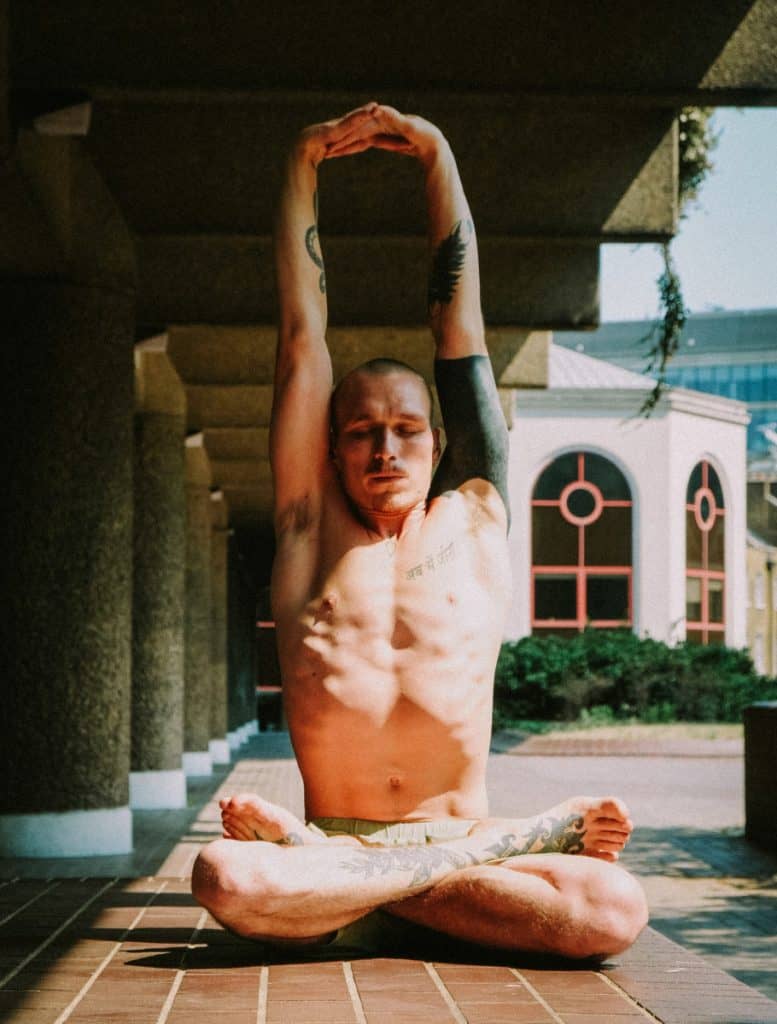
Meditation improves your focus and strengthens your mental fortitude. During sparring and fighting it helps you to:
- Dodge and counter attacks coming at you
- Recognize patterns and anticipate accordingly
- Face and handle your fears
- Keep control of your breathing
So how does that work exactly? And what form of meditation is most effective to prepare for fighting? Read on to learn exactly how meditation influences the abovementioned aspects of fighting and for specific meditation techniques that you can practice for sparring/fighting.
How does meditation affect reaction time?
Research shows that meditation trains a state of awareness in which you “expend less energy yet maintain alertness.” This state helps you focus and be less distracted by irrelevant cues. In effect, your reaction time improves directly after meditation and even more as a result of regular practice.
Decreasing your reaction time is of course highly beneficial during a fight. It helps you to be more accurate, because the shorter your reaction time, the faster you can adjust your attacks when your target moves away from them. Moreover, a shorter reaction time gives you more time to dodge and counter attacks coming at you.
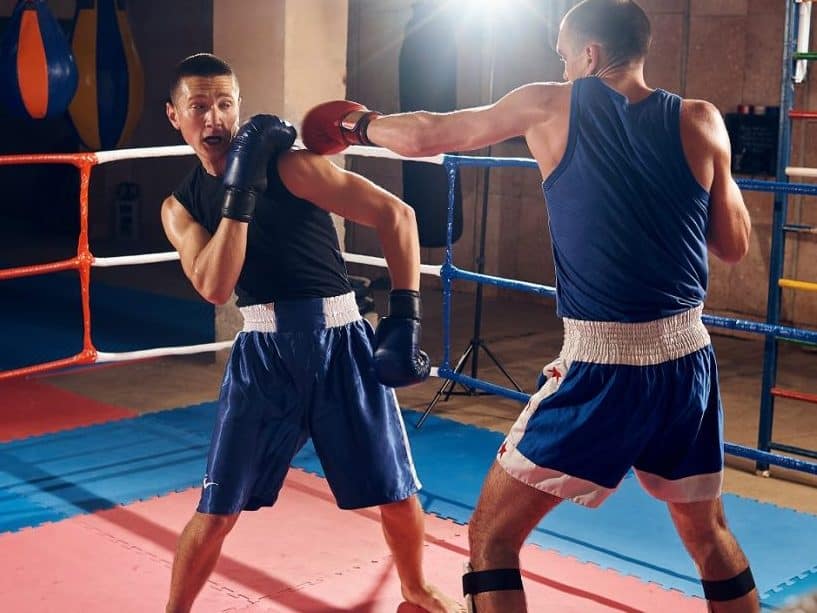
Yet, reaction time is not the only factor for dodging and countering attacks. In a fight, you also have to “read” attacks coming at you correctly in order to dodge and/or counter effectively.
How do you read your opponent in martial arts?
In order to read attacks in time, you cannot just look at punches, kicks, knees and elbows, because then you’re likely too late to respond effectively. Thus, you have to look at the steps that prelude attacks, namely the footwork, the hips, and the shoulders – that’s where every technique starts.
However, it’s hard to pay attention to all those things, because you can’t have your eyes focused on everything at the same time. Moreover, even if you read your opponent and are quick to react to attacks coming at you, there is still the risk of “biting” on a fake or feint.
What is a feint in martial arts?
A fake is an attack that is not finished (e.g. jabbing until halfway or bringing a knee up as if throwing a kick). A feint, however, is not an attack – it’s anything else intended to put off an opponent. For example, a ducking movement, a change in expression, a punch to the side, or a sudden sound.
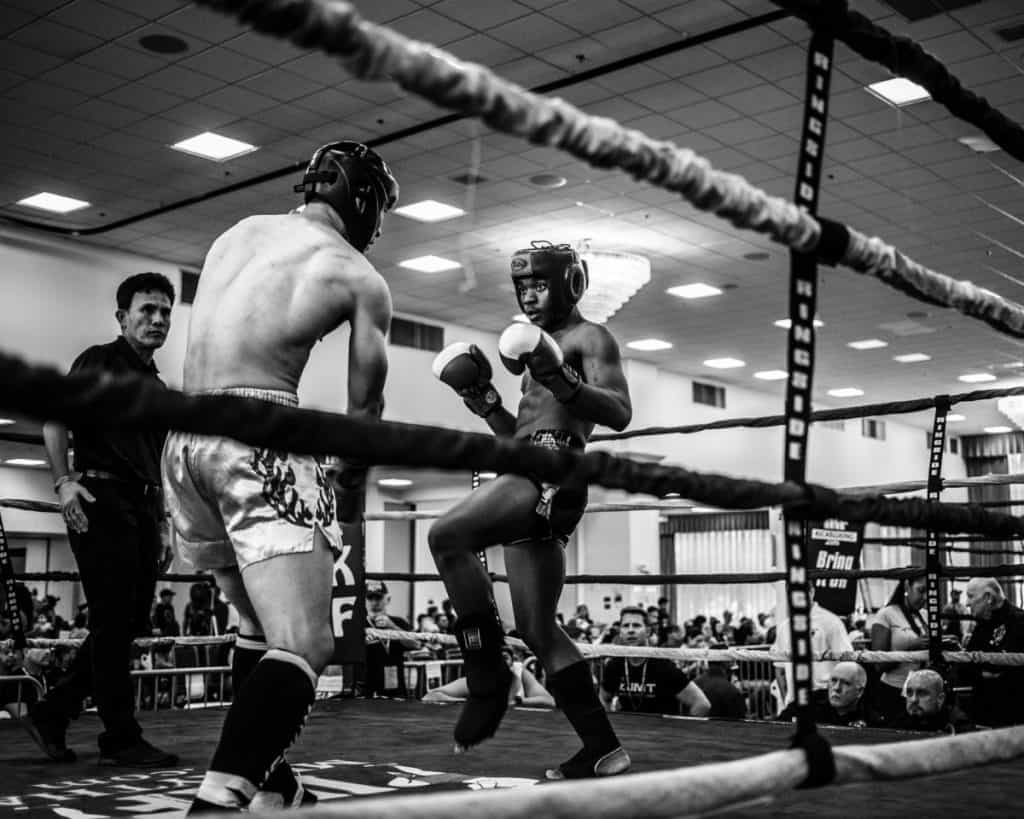
Both fakes and feints are used to make an opponent unsure about when an actual attack is coming. Also, they are used to draw out reactions from an opponent. Such reactions drain energy and may leave you in a vulnerable position.
The trick to reading your opponent and not biting on their fakes and feints is to perceive your opponent as a whole. This way, you are not just focused on attacks coming at you, but also at your opponent’s intentions – whether they are faking, feinting or throwing a real strike. For such a perception you have to be calm and focused, because when you tense up your perception narrows.
While a narrowed perception may be useful when you’re at a distance and become aware of one single thing that makes you tense, an opponent with multiple arms and legs can distract you left and attack you right. A too narrow focus, then, is not desirable during fighting.
The ideal focus is when you perceive your opponent and your part of the dojo/ring and filter out the rest. When this goes well you’re “in the zone,” where it feels as if you perceive yourself fighting in third-person like in a videogame. Since meditation helps you to focus and be less distracted by irrelevant cues like the rest of the dojo or fakes and feints, it helps you to “step into the zone” and remain there even in the midst of battle.
Reading your opponents doesn’t only help you defensively, though. As you learn to read your opponents, you will start to see their tendencies, and these tendencies you can anticipate and counter with strikes of your own.
How do you anticipate your opponent’s moves?
While the feet, hips, and shoulders show someone’s direct movements, someone’s movement patterns expose what they will likely do next. We are all creatures of habit, so kickboxers too – from their specific ways of standing and moving to their favorite techniques, combinations, and counters.
For example, one person will try to counter every jab with a cross while another prefers countering with a low kick. Similarly, many orthodox fighters will follow a right punch with a left kick, but some prefer to duck low and come back with a hook. If you learn to read your opponent, such habits will expose their movement patterns to you.
As you start recognizing the patterns of your opponent, you can take your fighting to the next level – a level where you spend less of your fight reacting and more of it anticipating and acting accordingly.
So, when you learn that your opponent prefers to counter your jabs with a jab of their own – you can follow your jab with a sidestep to attack the exposed side. And those ducking after every right punch? Indeed, you can intercept their movement with an uppercut or knee. By anticipating, then, you’re one step ahead of attacks coming at you.
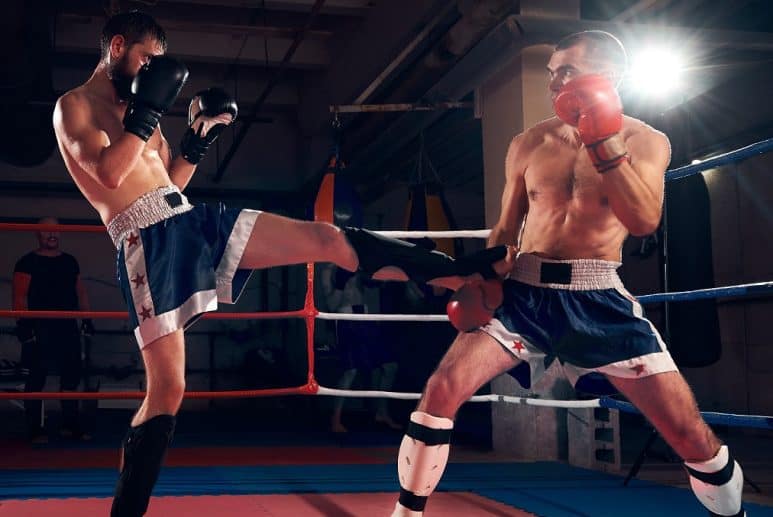
How do you predict movements in a fight?
By reading your opponent’s tendencies and patterns you can predict their movements throughout the fight. Besides the movements your opponent will make for their preferred attacks and counters, they will also constantly make moves intended to keep their preferred fighting distance from you.
Once your read your opponent’s preferred fighting distance, you can predict many of their movements and hence steer them to where you want them to go. For example, those who prefer to stay at range will (unconsciously) move in such a way that they maintain the same distance between you two. So, if you step to the right of such an opponent, that opponent will likely move a similar amount to the left. Knowing this, you can steer your opponent by stepping to the left (their right) while intercepting his/her leftward movement with a lateral attack from your right – a right hook or roundhouse kick, for example.
While that’s a pretty general example, everyone has very personal patterns as well. Some touch their nose or eyebrow every so many seconds, while others pull at their pants or have a distinct head movement pattern. The latter example you can see in the UFC fight underneath: Jon Jones explained during the post-fight interview that his opponent, Daniel Cormier, has a pattern of dipping his head to the right side. Having read this pattern, Jones predicted the perfect moment to intercept Cormier’s head movement with a left head kick and ended the fight shortly after.
So while the movements of a fight may look erratic to the untrained eye, with enough focus you can recognize the method to almost any madness. Decode the methods and you will find attack openings – even with the most defensively sound opponents.
Pattern recognition machines
The famous MMA Coach Firas Zahabi calls humans “pattern recognition machines,” because we continuously look for patterns in everything that happens around us. Think about it, you probably know at least one fighting pattern of every partner that you regularly train with.
However, in order to recognize such patterns you have to be calm, because when you’re tense you’ll experience fighting as chaos. And then you’ll either freeze up or waste all your energy by reacting to all potential dangers – also when they’re fakes or feints. In both cases your ability to recognize patterns and anticipate your opponent’s next moves goes out the window.
Nonetheless, it’s natural that fighting puts you on edge. After all, the agreement is to hit each other for a set amount of time – that’s not without risk. And while it mostly goes well (enough), it could go wrong at any moment. If you prefer to incur as little damage as possible – like most people – it means that part of your mind will always be conscious of the risks in fighting.
Of course, there are exceptions – those who come forward like a tank and let nothing stop them. While this surely has its advantages when it comes to discouraging or cornering an opponent, I wouldn’t recommend this style to anyone.
If you regularly spar or fight and block most of the strikes with your head, after a while there’ll be little left of your brain – even if your gloves are still between the strikes and your head.
Still, it can be beneficial to absorb a strike or two so that you can counter with a combination of your own – especially if this reduces the damage that your opponent can cause you afterward. But in order to determine which strikes you can absorb to counter effectively, you first have to read your opponent. Thus, also for taking the right strike and countering effectively, you need a calm focus – the type of focus that you train by meditating.
Nice bonus: being focused and mindful also enables you to keep the right amount of tension on your muscles so that you can quickly move, react, and counter with powerful strikes. This increases the likelihood of you ending the fight early, and thus preventing any more damage than necessary.
So, don’t just absorb every strike, but don’t fear them either. Since there is much to be gained in anticipating and countering the right strike, fear can indeed be your worst advisor. But how do I handle my fears and become more confident in fighting, especially considering the risks involved? Guess what – meditation can help you here as well!
How can I be more confident in fighting?
In order to become more confident you have to know what your fears are and where they come from. Prepare yourself in meditation and focus on your fear: acknowledge that it’s there and let the fear go through you. Breathe slowly to regain your focus and ask yourself for the root-cause of your fear.
For example, you may think that your fear is obvious: there are physical risks involved in fighting, so it’s as simple as that right? Yes, those risks are real, but you may fear something else even more. Perhaps the root-cause of your fear may not be a punch coming at you, but going down from it and thus being a failure. The way to handle these two different causes of fear are very different: overcoming a fear of punches you can “simply” train (see the video underneath), while a fear of failing may require a deeper level of self-analysis.
Since your fear can make you too frightened to actually analyze what’s causing it, you need to prepare yourself before you try to “look your fear in the eye.” Since the fear won’t become less frightening by itself, it is you that has to become braver and more confident so that you can face it head on.
In order to boost your bravery and confidence, start your meditation by focusing on the end result of you facing your fear: that you know where your fear comes from and that you know how to handle it. The version of you with that knowledge is a braver and more confident person. By envisioning and connecting to that person, you can embody it in the moment and be the person that’s ready to face his/her fear.
When you can face your fears, you can see what it’s made up of; when you see the components of your fear, you can break it down piece by piece. In effect, the fear changes from something scary into a puzzle – it may be difficult, but its solvable nonetheless.

The biggest fear we all have is a fear of the unknown. This is not just about getting or not getting damage from kickboxing, but also a fear of death comes back to not knowing what dying/being dead involves. This is one of the reason why Vikings were such feared warriors: death during battle didn’t have unknown consequences for them; rather it guaranteed entry into Walhalla.
Control your breath
If you can control your fear, you can also control your breath. If you’re in fear, your “sympathetic nervous system” is active – the nervous system that puts you in the fight or flight mode. In this mode, you fill up with adrenaline, your heart starts racing, all non-essential body functions are shut off and you’ll breath in the upper part of your lungs.
There are moments in fighting when you need this, because then it’s an actual physical struggle. However, at other moments – during technical sparring, the moments that you’re trying to read and anticipate on your opponent, during the break, etc. – you actually need to be calm.
When you’re calm, your “parasympathetic nervous system” is active. This nervous system lowers your blood pressure and regulates your fears, which puts you into recovery and lets you breath deep down into your lungs. This recovers your energy and makes it easier to focus.
The relations between focus, fear, tension, calm, and breath are a chicken-egg situation. You don’t just experience less fear, more focus, and breathe deeper when you’re calm, but in a frightening/tense situation you can also breathe deeper in order to become calm and focused.
Since you can hardly expect to be calm during an entire fight, training your focus is an essential tool to calm yourself down at the moments you need it. Meditation is one of the keys to focus, and focus is the key to a calm mind and optimal performance – both in and out of the ring.
How do you meditate for fighting?
All forms of meditation train your focus and make you calmer, but visualization is a meditation technique that you can use as actual fight preparation. Pre-fight visualization works as a risk-free rehearsal where you can go through fight scenarios and get comfortable with the intensity of fighting.
The basic principles for meditation you find in this blog article and an introduction to pre-fight visualization you can read here. While the latter is focused on getting comfortable with fight day and everything that comes along with it, you can extend the same visualization technique to specific fighting techniques, moments in fighting, or elements that you fear.
How do you practice visualization?
Find a calm place and lay down: the less distraction, the easier it is to “lose” yourself in visualization. Start with deep breaths and turn your focus inward – how does your body feel; how do you feel? Then, imagine a fighting scenario with you moving to apply techniques, dodges, and counters.
Play a scenario where you attack with your favorite combinations. In another scenario, visualize you anticipating on your opponent (it doesn’t have to be a specific person) and intercepting their movement with your strikes. Finally, visualize your techniques landing so well that you knockout your opponent, and you emerging victorious. Make sure to focus on your technique here: where are you accelerating, how do you generate power? Where do you move after you performed your techniques – are you safe there?
The more often you visualize this, the more training you get at those components of fighting. In effect, visualization enables you to program your muscle memory in a very specific and risk-free manner.
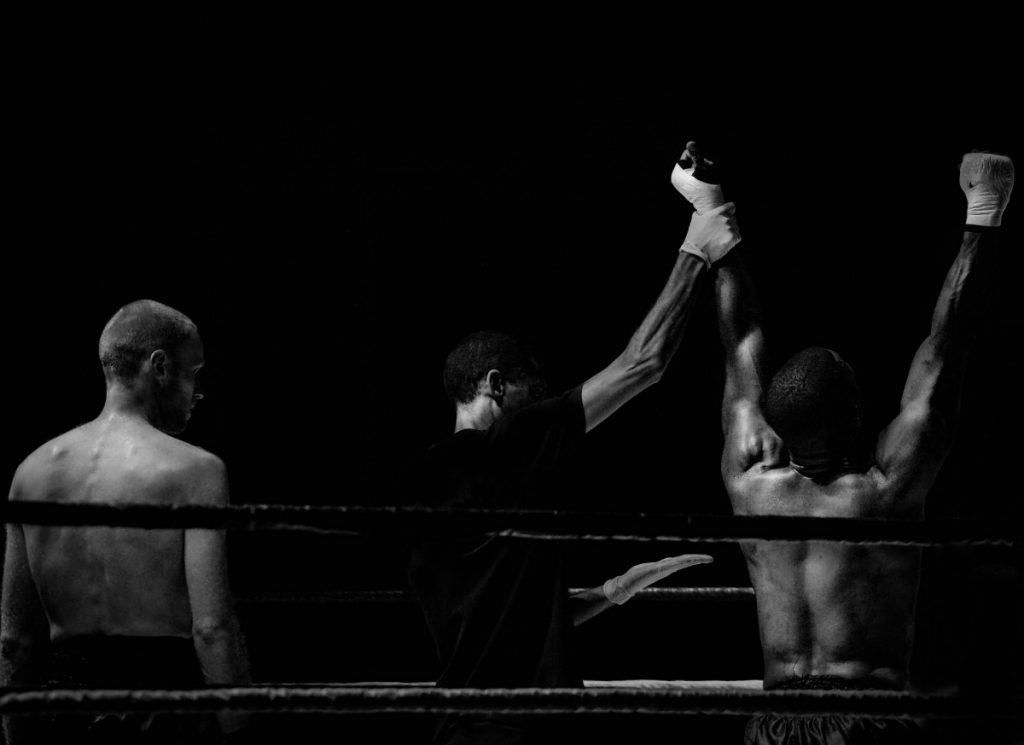
The more specific you imagine the fighting scenarios in your mind, the better you’ll be able to feel it in your body and the more effective your visualization will be. With practice you’ll get good at it. After a while, you may even start doing it automatically. Perhaps you’re already visualizing without being aware of it, underneath the shower or in bed for example – these are places with little external input, which automatically causes you to turn inward.
Sometimes I lay in bed and then out of nowhere my leg jolts up for a high kick – something that sadly doesn’t benefit my nor my girlfriend’s sleep…
Next, start visualizing strikes coming at you, with you reacting in time to dodge and to counter wherever you see an opportunity. Conversely, visualize you getting hit, and what happens if everything goes wrong. What is the worst that could happen? Visualize this, in as much detail as possible, and focus on how that feels. Then, take time to accept this possibility. This won’t be easy, and may take multiple visualization sessions – that’s okay, meditation isn’t a competition.
In your mind you can make situations infinitely uncomfortable, scary, difficult, and disastrous.
Still, acceptation relieves the fear for such potential disastrous scenarios. Moreover, handling your fears increases the odds of you taking control of the scenario and preventing that extreme outcome that you visualized in your mind.
My biggest fears? Irreversible brain damage or failing miserably in front of my friends and family. But do these fears help to prevent such a situation? Sadly not. Of course I adjust my fighting style to preventing such a situation, but I would do that without the fear too.
When you decide to spar or fight in the ring with someone, then you take a risk. Make peace with this. This way you take away the fear of the negative consequences, allowing you to manage the risk instead of closing your eyes for it.
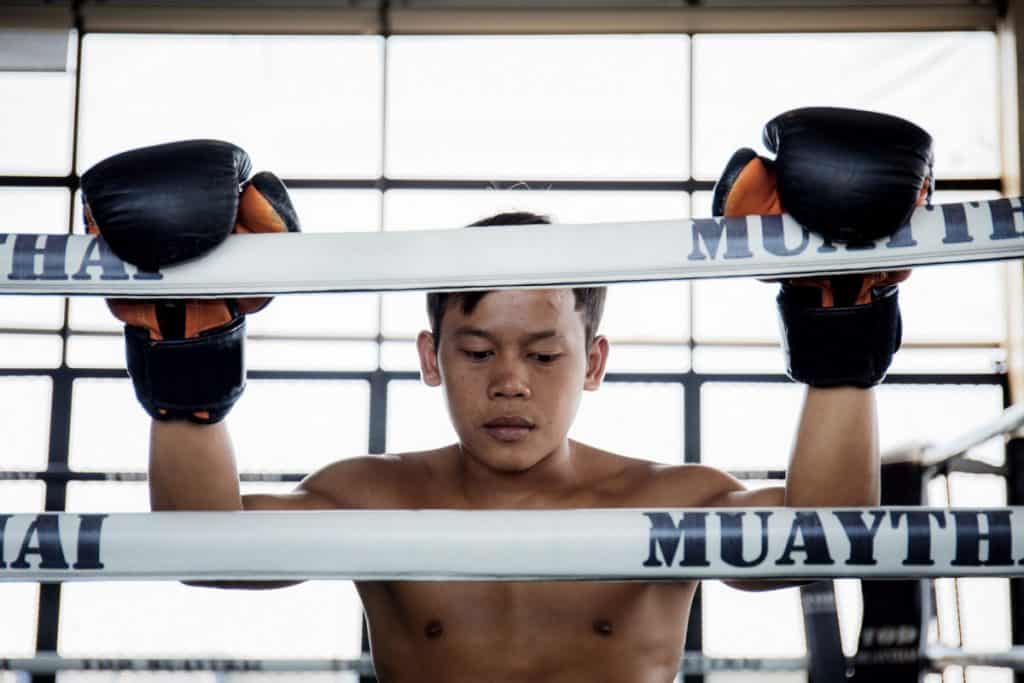
So, visualize both things that go well and things that go wrong during a fight. This will improve your technique, help you recognize fighting scenarios, and regulate your fear response. This way you can get comfortable with the negative emotions of a fight, and learn to accept the potential consequences beforehand. In effect, you’ll be more calm, allowing yourself to be creative and actually have fun during a fight. This will elevate your fighting automatically to a higher level – the level where fight sports transitions into martial arts.
- Written by Merlijn Broersma
Recent Posts
The previous articles covered the foundation of fighting nutrition: the best pre- and post-workout meals, fight day nutrition, and what your everyday diet should include. This article will cover the...
Previous articles have discussed pre- and post-workout meals, fight day nutrition, and how to train without eating anything at all, so called “fasted workouts.” That means that there’s one...